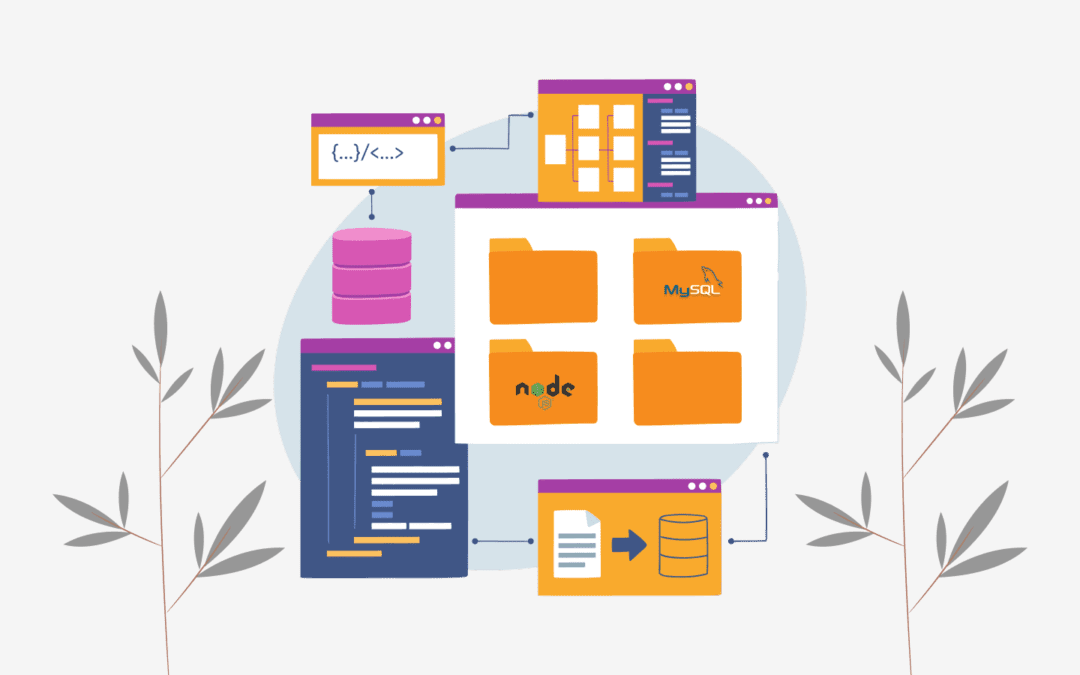What is ORM in Node.js?
ORM (Object Relational Models) is a way of mapping of relational database systems to objects. Various database systems access data in various ways, and ORM makes it simpler for us to maintain objects even when the sources and apps they access change over time.
By using ORM, data migration between databases can be streamlined and seamless. ORM maintains objects despite changes in the apps and sources of database access, since different database systems access data in different ways.
What are the benefits of using an ORM?
- Simplified Database Interaction: One of the primary advantages of Node.js ORM is the abstraction it provides over raw SQL queries. Developers can work with a higher-level, object-oriented syntax that closely resembles the application’s programming language, making it easier to read, write, and maintain database-related code.
- Cross-Database Compatibility: Node.js ORM frameworks often support multiple database systems, such as MySQL, PostgreSQL, SQLite, and more. This cross-database compatibility allows developers to switch between databases or even migrate their applications to a different database system without significant changes to the codebase.
- Model-Driven Development: ORM frameworks promote the use of data models to represent database tables and their relationships. By defining these models, developers can work with entities in the application code that closely mirror the database structure.
- Data Validation and Transformation: ORM frameworks often include built-in validation and transformation mechanisms. Developers can define rules and constraints on data fields, ensuring that only valid and consistent data is stored in the database.
- Database Migration Management: ORM frameworks usually provide tools for managing database schema changes and migrations. This is especially beneficial when the application evolves and requires modifications to the database structure.
- Optimized Query Generation: ORM generate efficient SQL queries tailored to the specific database system, optimizing performance and minimizing the risk of common performance pitfalls.
- Code Reusability: With ORM frameworks, developers can encapsulate database-related logic within reusable functions or methods. This leads to cleaner and more modular code, allowing developers to easily share and reuse database interaction components across different parts of the application.
- Testing and Mocking: ORM frameworks facilitate unit testing by providing mockable interfaces for database interactions. Developers can write tests without needing to connect to a live database, making the testing process faster, more predictable, and less dependent on external resources.
What are the steps to integrate an ORM in NodeJS?
Initialize Your Node.js Project (if not done already):
If you haven’t already set up a Node.js project, navigate to your project’s root directory using your terminal and run the following command to initialize a new Node.js project:
npm init
Follow the prompts to configure your project settings and create a package.json file.
Choose an ORM:
Decide which ORM you want to use for your project. Some popular ORM frameworks for Node.js include Sequelize, Mongoose, TypeORM, and Bookshelf. Research each ORM to determine which one best fits your project’s requirements.
Install the Chosen ORM Package:
Once you’ve selected an ORM, you can install the corresponding npm package. Use the following command to install the package globally (recommended for global CLI tools) or locally (recommended for most projects):
# To install globally
npm I -g orm-package-name
# To install locally
npm i orm-package-name
Configure the ORM:
ORM frameworks usually require some configuration to connect to your database. Create a configuration file (e.g., config.js or database.js) in your project and specify the database connection details such as host, port, username, password, and database name. In Sequelize it is done like this-
const Sequelize = require(“sequelize”);
const sequelize = new Sequelize(
‘hello_world_db’,
‘DATABASE_USERNAME’,
‘DATABASE_PASSWORD’,
{
host: ‘DATABASE_HOST’,
dialect: ‘mysql’
}
);
Import and Initialize the ORM:
In your Node.js application code, import the installed ORM package and initialize it using the configuration you’ve set up. This step may involve creating an instance of the ORM’s main class and passing the configuration as parameters. For example to import Sequelize ORM we use the following command :-
sequelize.authenticate().then(() => {
console.log(‘Connection has been established successfully.’);
}).catch((error) => {
console.error(‘Unable to connect to the database: ‘, error);
});
Define Models:
Define your data models using the ORM’s syntax. Models represent database tables and their relationships. This step involves creating classes or objects that map to database tables, specifying fields, data types, and relationships between tables. In Sequelize we define models as given in code below:-
const Book = sequelize.define(“books”, {
title: {
type: DataTypes.STRING,
allowNull: false
},
author: {
type: DataTypes.STRING,
allowNull: false
},
release_date: {
type: DataTypes.DATEONLY,
},
subject: {
type: DataTypes.INTEGER,
}
});
Interact with the Database:
With your models and database connection set up, you can now start interacting with the database using the ORM’s methods. This might include querying, inserting, updating, and deleting records using the model objects you’ve defined.
sequelize.sync().then(() => {
console.log(‘Book table created successfully!’);
Book.create({
title: “Clean Code”,
author: “Robert Cecil Martin”,
release_date: “2021-12-14”,
subject: 3
}).then(res => {
console.log(res)
}).catch((error) => {
console.error(‘Failed to create a new record : ‘, error);
});
}).catch((error) => {
console.error(‘Unable to create table : ‘, error);
});
Handle Errors and Monitor Performance:
As you work with the ORM, make sure to handle errors gracefully and optimize your queries for performance. The ORM’s documentation should provide guidance on error handling and query optimization.
Test and Refine:
Test your application thoroughly to ensure that the ORM integration is working as expected. Use testing frameworks and tools to write unit and integration tests for your database interactions. Refine your code based on testing results and feedback.
Conclusion
An ORM is ideal and suitable for beginner web developers or small-scale projects. Since there is no ORM that solves all your problems, the best ORM is the ORM that is most suitable for your application need.
In summary, use ORM to achieve code standardization, security, maintainability, language abstraction, DRY, etc.
